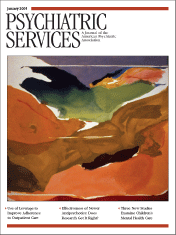Brief Reports: Symptoms of Peritraumatic and Acute Traumatic Stress Among Victims of an Industrial Disaster
Abstract
Previous studies have examined peritraumatic distress, peritraumatic dissociation, and acute stress disorder as predictors of posttraumatic stress disorder (PTSD). The authors examined whether these three predictors were associated with PTSD symptoms when considered simultaneously. Two-hundred victims of a factory explosion in Toulouse, France, were surveyed two and six months after the event with use of retrospective self-reports of peritraumatic distress, peritraumatic dissociation, and acute stress disorder. A hierarchical multiple regression predicting PTSD symptoms six months posttrauma indicated that all three constructs explained unique variance, accounting for up to 62 percent. Peritraumatic distress and dissociation and acute stress disorder appear conceptually different from one another and show promise in identifying who is at risk of PTSD.



